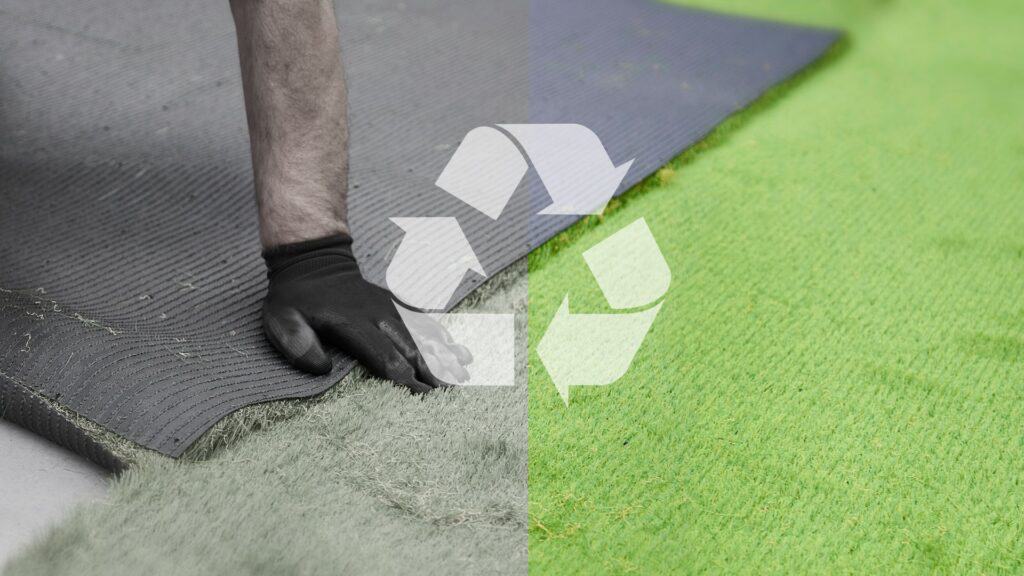Eco-Friendly Gym Flooring: Recycling Options and Benefits (Intro)
First and foremost, gym flooring must meet requirements linked to the needs of athletes and members. It must deliver a high level of performance for different activities, durability and, above all, safety and protection for users. These are the challenges for equipment that requires varied and specific raw materials, and whose variety continues to drive the market. Do they comply with environmental and ecological standards? In other words, is gym flooring recyclable?
Manufacturers of gym flooring are actively committing to the development of environmentally friendly and health-promoting products. Some of them use recycled raw materials in all of their products. Others are striving to reduce their environmental footprint by offering recyclable equipment.
Which types of gym flooring are recyclable?
There are two types of flooring on the market: those made from recycled products, such as rubbers that come from used tires, and recyclable flooring materials, such as PVC and linoleum.

Flooring made from recycled raw materials
Rubber is a superior flooring material for sports and is a great option for any gym. Recycled rubber flooring is composed of a recycled rubber granule and coloured pigment. This type of coating can come in a uniform black or speckled black colour with coloured EPDM. It is perfect for a weight room, a functional training area, a cardio room, or for group exercise or dance classes. The advantages of this type of flooring made from recycled material are that it is resistant, versatile and comfortable.
Recycled plastic tiles
This type of flooring is resistant to bacteria and mould. It is self-cleaning and adapts very easily to the floors of showers and changing rooms.
Recyclable gym flooring
Linoleum flooring
Linoleum is often mistaken for PVC. It is, however, a 100% natural coating and, above all, recyclable. Chalk, resin, and natural pigments are among the components of linoleum. It constitutes the likes of jute, wood powder, cork bark and flax. Truly eco-friendly, it is hygienic and has antibacterial, antiseptic and anti-allergenic qualities. Often found in sanitary and hygienic settings, it also makes great gym flooring.
PVC gym flooring
Wrongly known as a non-recyclable material, its use in the manufacture of multi-purpose sports flooring materials is widespread. It is perfect for many sports, competitions and championships. It has an optimal level of wear resistance.
Other recyclable flooring materials
Floor coverings made from natural resources such as wood, engineered parquet, vinyl, and clip-on PVC are also recyclable.
What are the benefits of recyclable gym flooring?
Having recyclable flooring is not just a trend or a fad. It contributes enormously to reducing the impacts of climate change, reinforcing environmental commitment.
Waste reduction
Recycling promotes waste reduction and therefore prevents end-of-use flooring from a trip to the landfill or incinerator.
Economics of natural resources
Recycled gym flooring reduces the use of natural resources and limits emissions from incineration. It contributes to the preservation of the planet’s natural resources while avoiding waste. It makes it possible to commit to the further development of the circular economy.
In the field of construction, there are advantages to having a certification of green buildings: LEED, WELL, or BREEAM. Active recycling and reusable material use are positive indicators of the intent to attain these certifications.
How is flooring recycled?
Many organisations and programs offer the recycling of gym flooring.
The recycling program starts during the manufacturing process. It limits glues, pieces of concrete or other chemical materials used in manufacturing. Loose and glueless pieces are often the easiest to recycle. As a result, there are sorting centres that specialise in recycling PVC and vinyl from businesses.
Other programs aim to clean waste separately, according to materials, before transforming it. The collection policy is currently widespread, especially in European countries. Flooring manufacturers’ unions are lobbying for even further cooperative collection of used flooring to give it a second life.
What happens to used flooring?
Used flooring is often broken down and reformed into other products or new flooring materials. Lower-quality waste is shredded and crushed to give it usability in other applications, such as traffic cones or flexible pipes. It can also be used in the manufacture of other cases, such as mixes for roads or drainage pipes.
Conclusion
Recover, recycle, and reuse are the key terms in use by flooring manufacturers as they commit to preserving the environment and participating in the circular economy. It is fast becoming the way to position a company to reserve its place in the future economy while remaining relevant in current manufacturing trends.
To comment on the article, please proceed to the Telegram post. We encourage you to read our comprehensive article “How To Choose Gym Flooring“.
Disclaimer: the opinions and positions expressed in this publication are those of the authors and contributors and do not necessarily reflect the opinions or policies of the professional fitness community.

